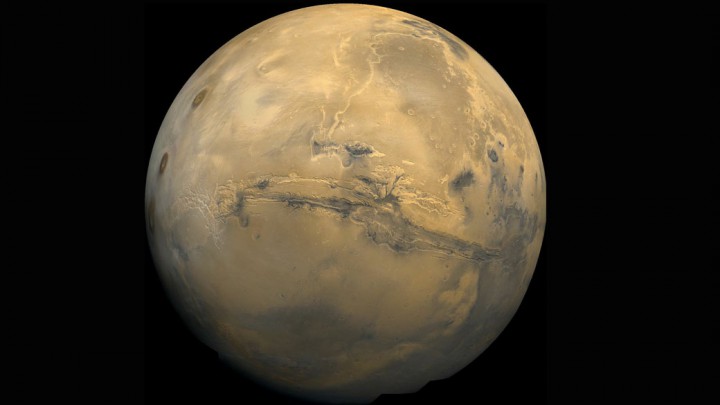TORONTO – Scientists have known for a long time that there is frozen water on Mars. But a new study suggests that water could also exist on Mars in liquid form.

Researchers used measurements from NASA’s Curiosity rover, which has been on the planet’s surface since 2012, and found a substance in the dirt called calcium perchlorate.
READ MORE: Curiosity rover detects nitrogen, supports research that Mars was once habitable
Morten Bo Madsen, associate professor and head of the Mars Group at the Niels Bohr Institute at the University of Copenhagen explained that under certain conditions — in this case at night and just after sunrise in the planet’s winter — calcium perchlorate absorbs water vapour from the atmosphere. When this happens, the water vapour condenses on the surface and forms frost.
“When night falls, some of the water vapour in the atmosphere condenses on the planet surface as frost, but calcium perchlorate is very absorbent and it forms a brine with the water, so the freezing point is lowered and the frost can turn into a liquid,” Madsen said.
Earlier this month, a study revealed that glaciers on the red planet could contain billions of cubic metres of frozen water.
Scientists believe that about 4.5 billion years ago, Mars had as much as six-and-a-half times more water than it does today with a thick atmosphere.
Gale Crater — the location of Curiosity — might have been a lovely vacation spot at one time: it was likely home to a large lake fed by rivers.
So now that it’s believed liquid water exists on the planet, does that mean that we’ll find signs of life?
The researchers say that it’s unlikely since Mars is too dry, too cold and the planet receives too much cosmic radiation for life to exist near the surface.
But all these watery findings are good news. The rovers on the surface — Curiosity, Opportunity and the now retired Spirit — are helping to not only paint a picture of what an ancient Mars once looked like, but are also helping to plan future manned trips. If there is a way to live on the planet, humans are going to need water and it will be far easier to get it from the planet than cart it there from Earth.


Comments